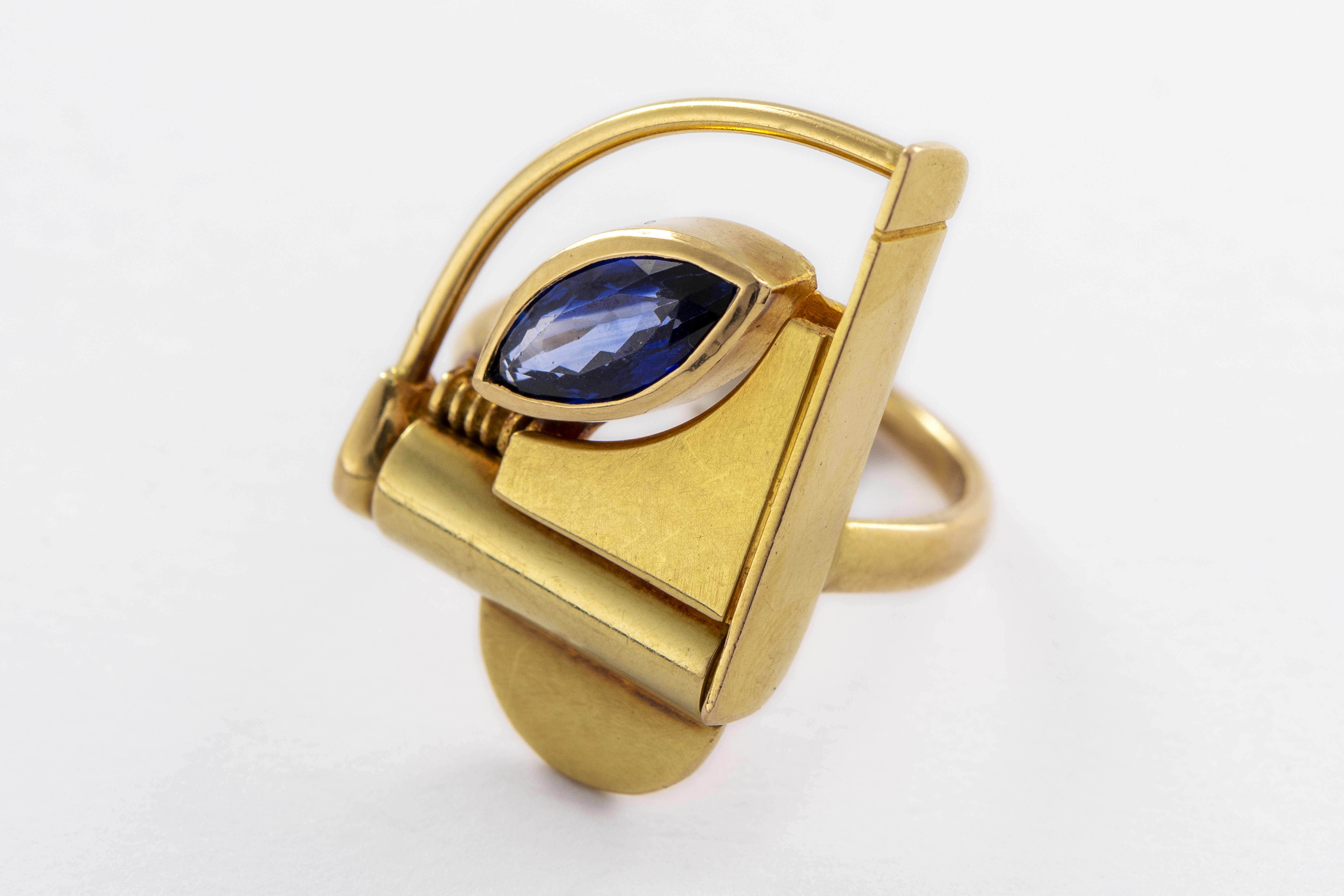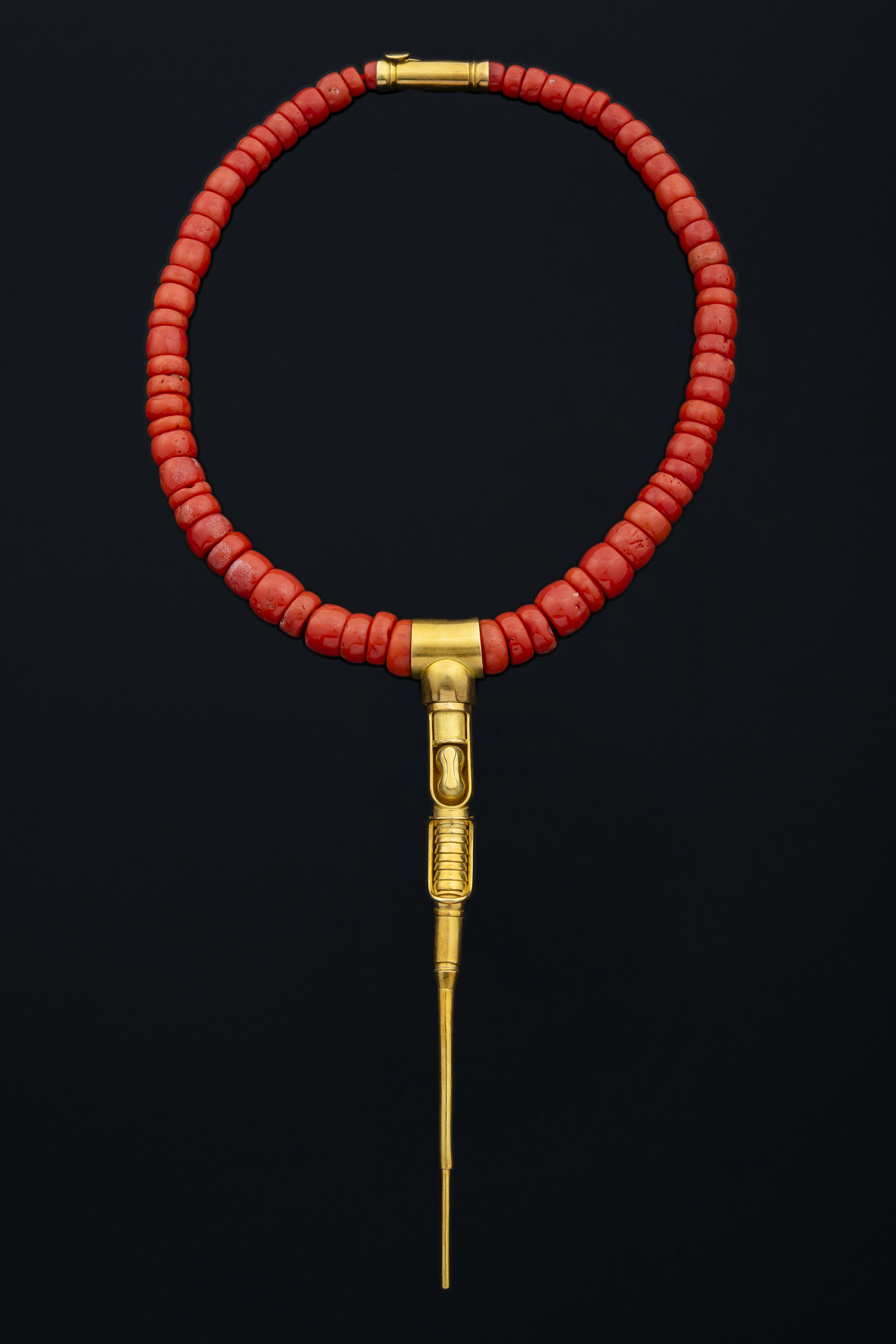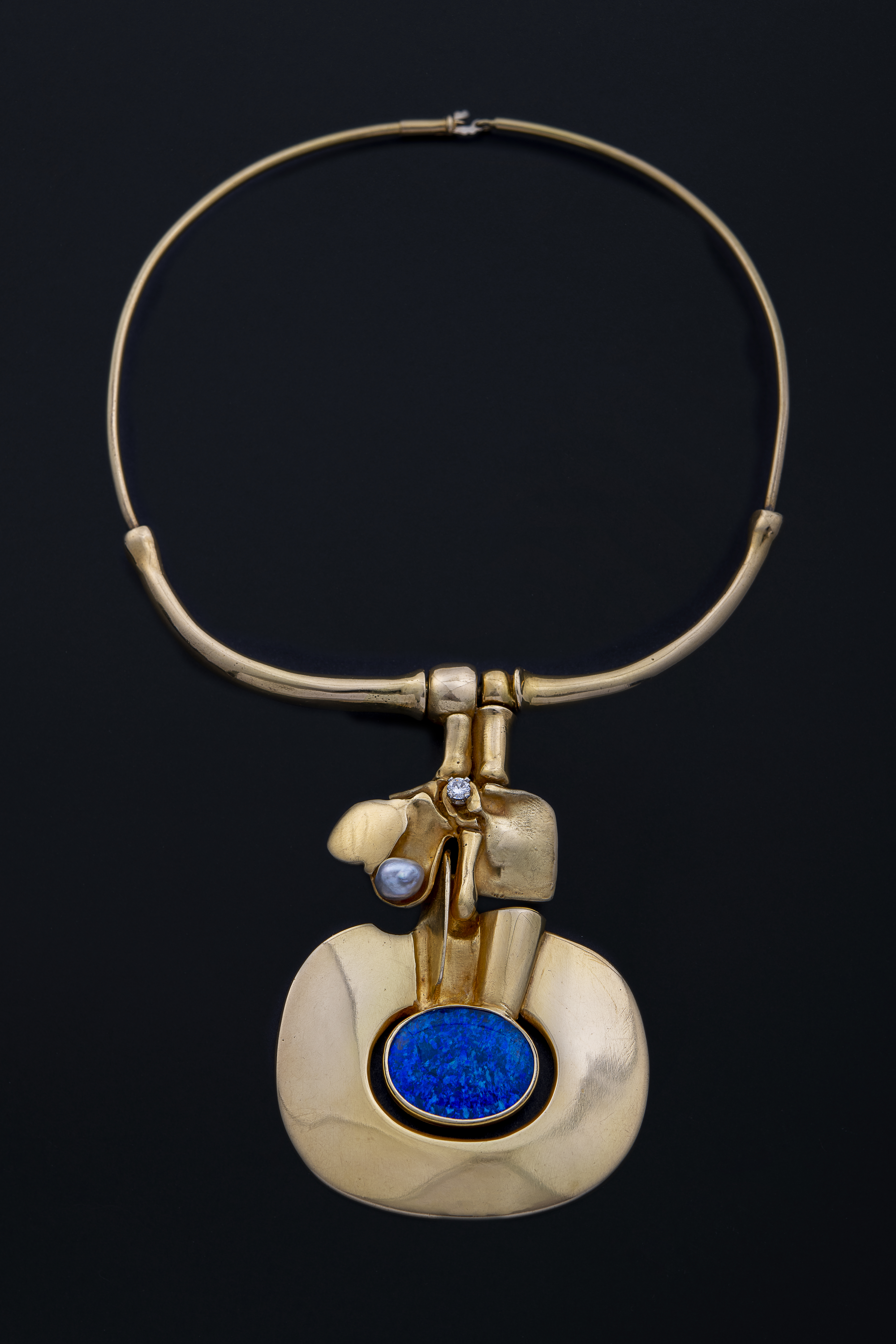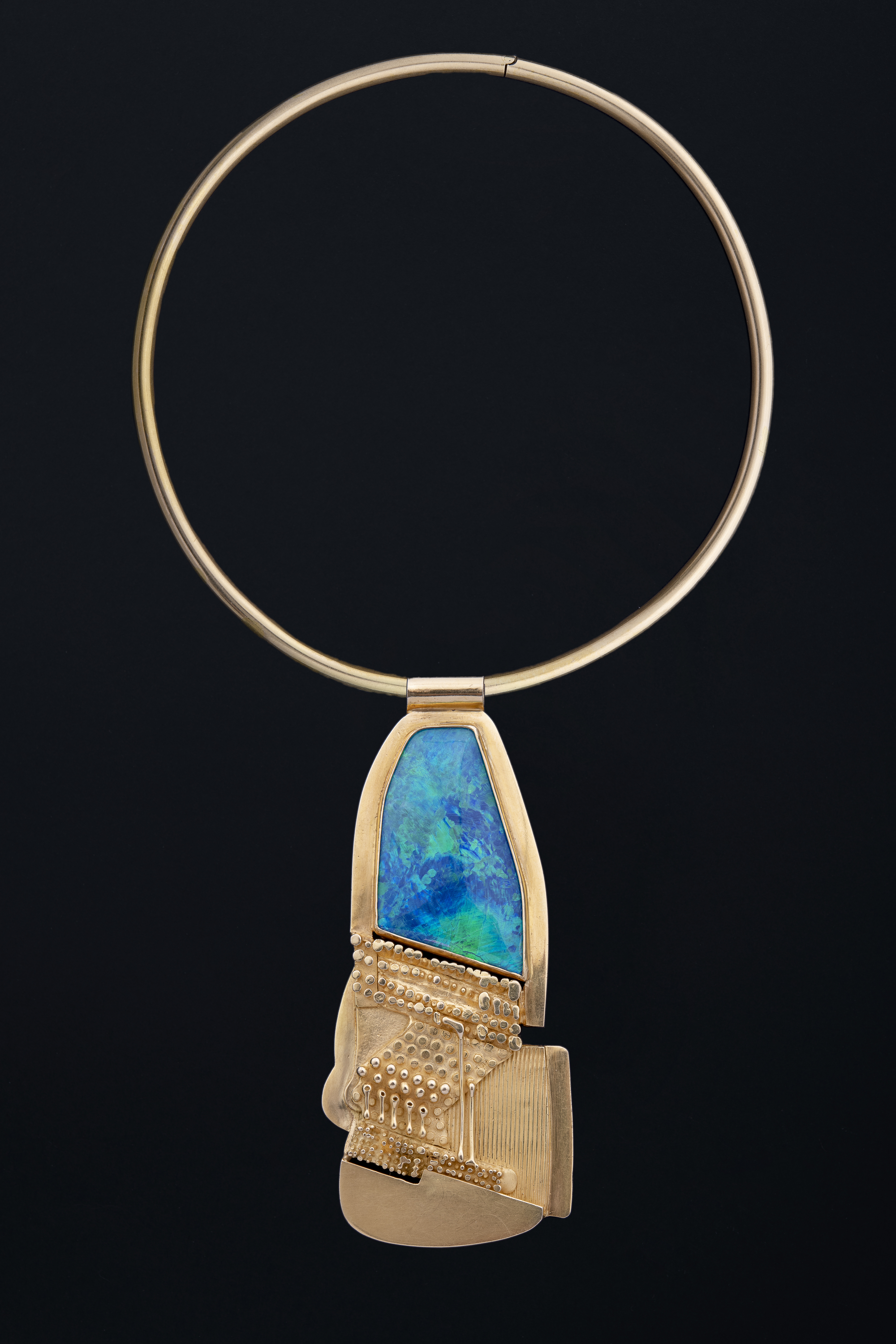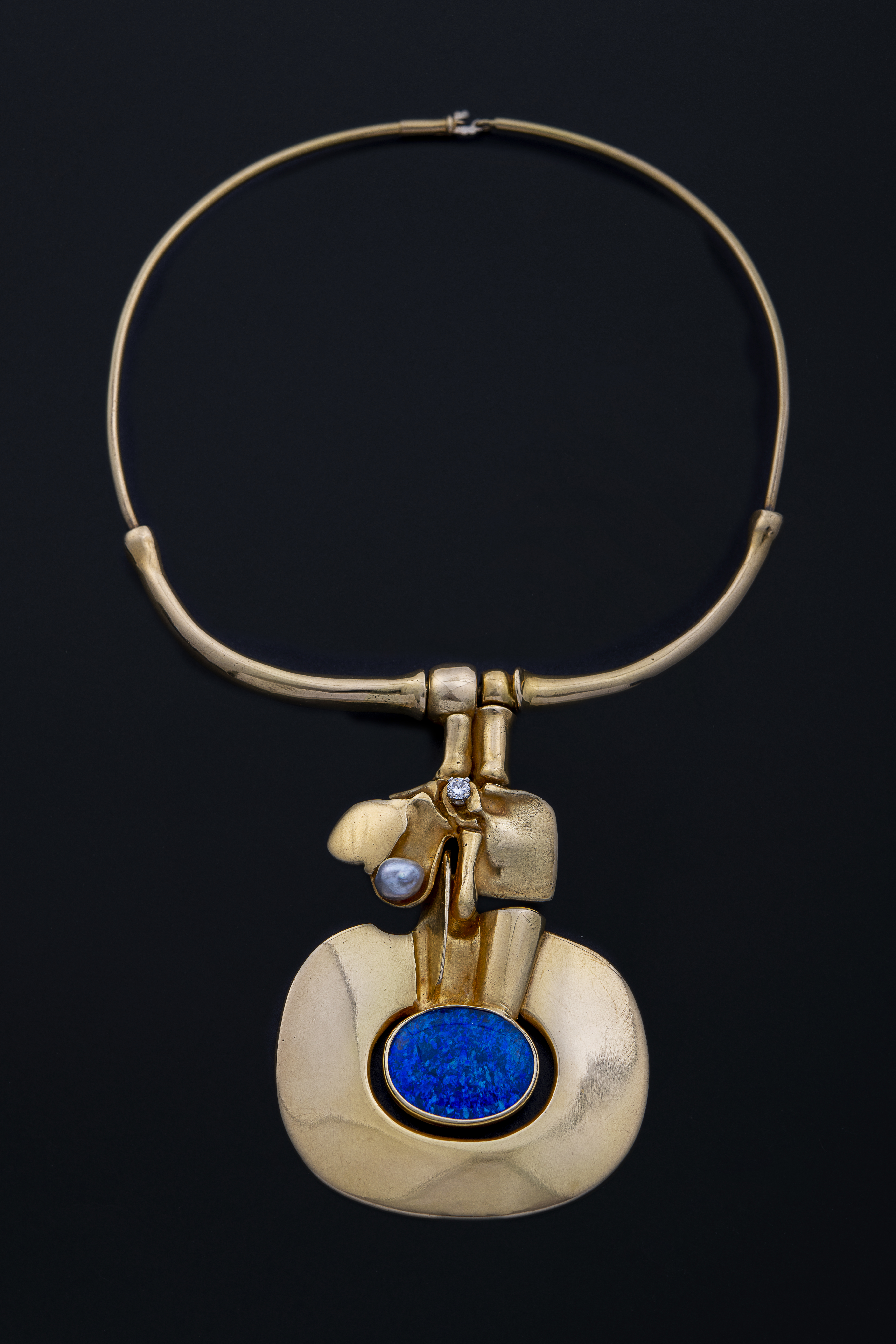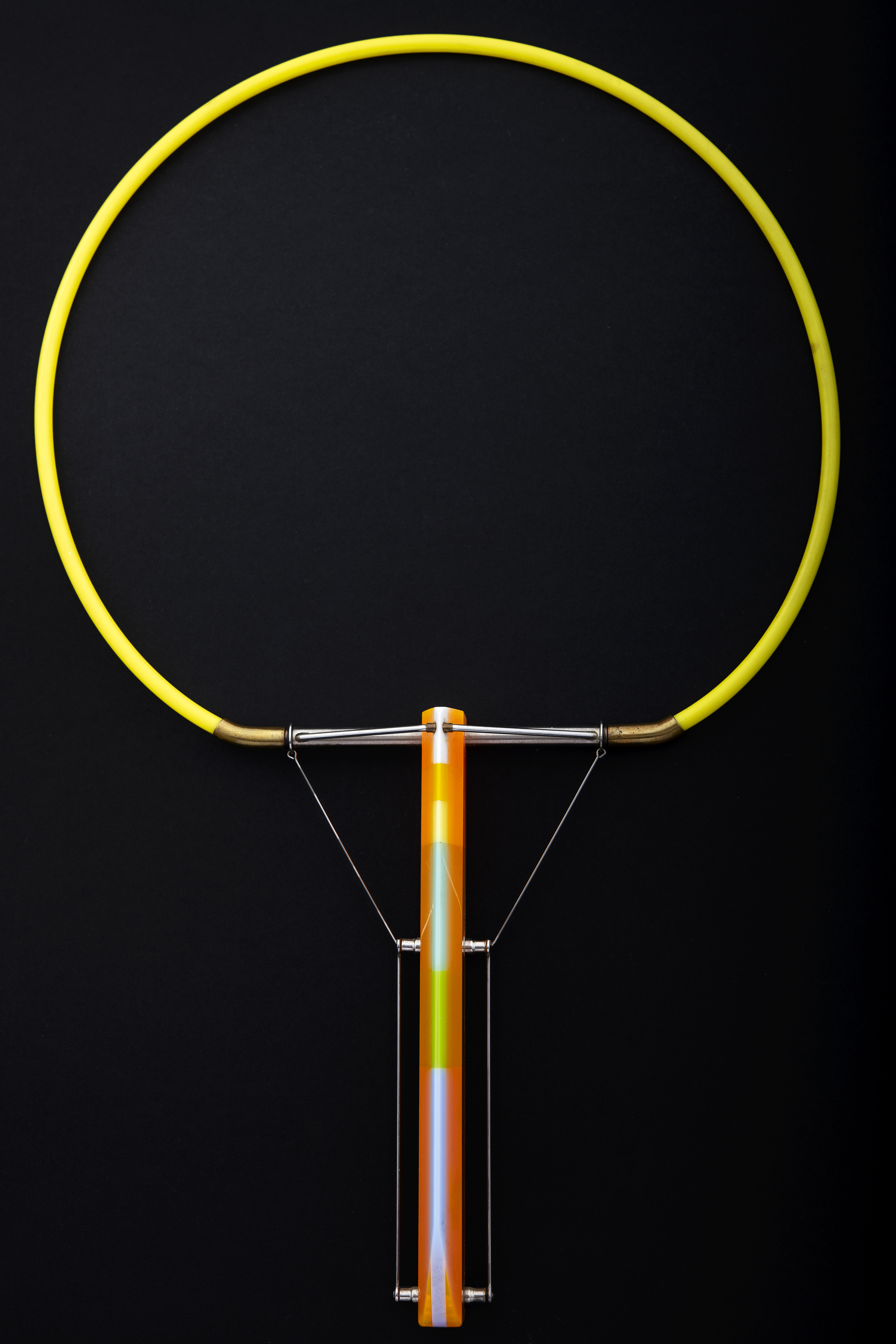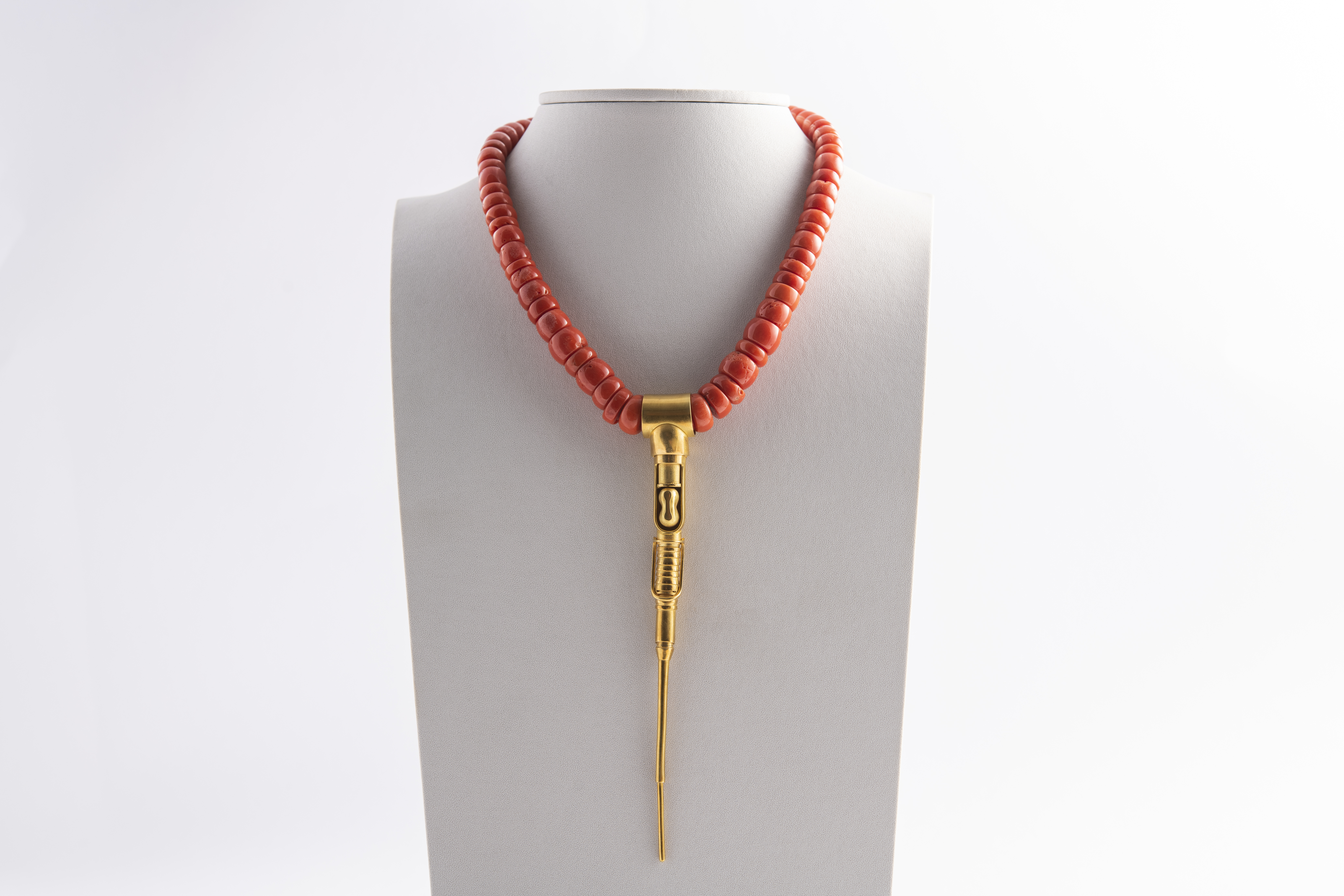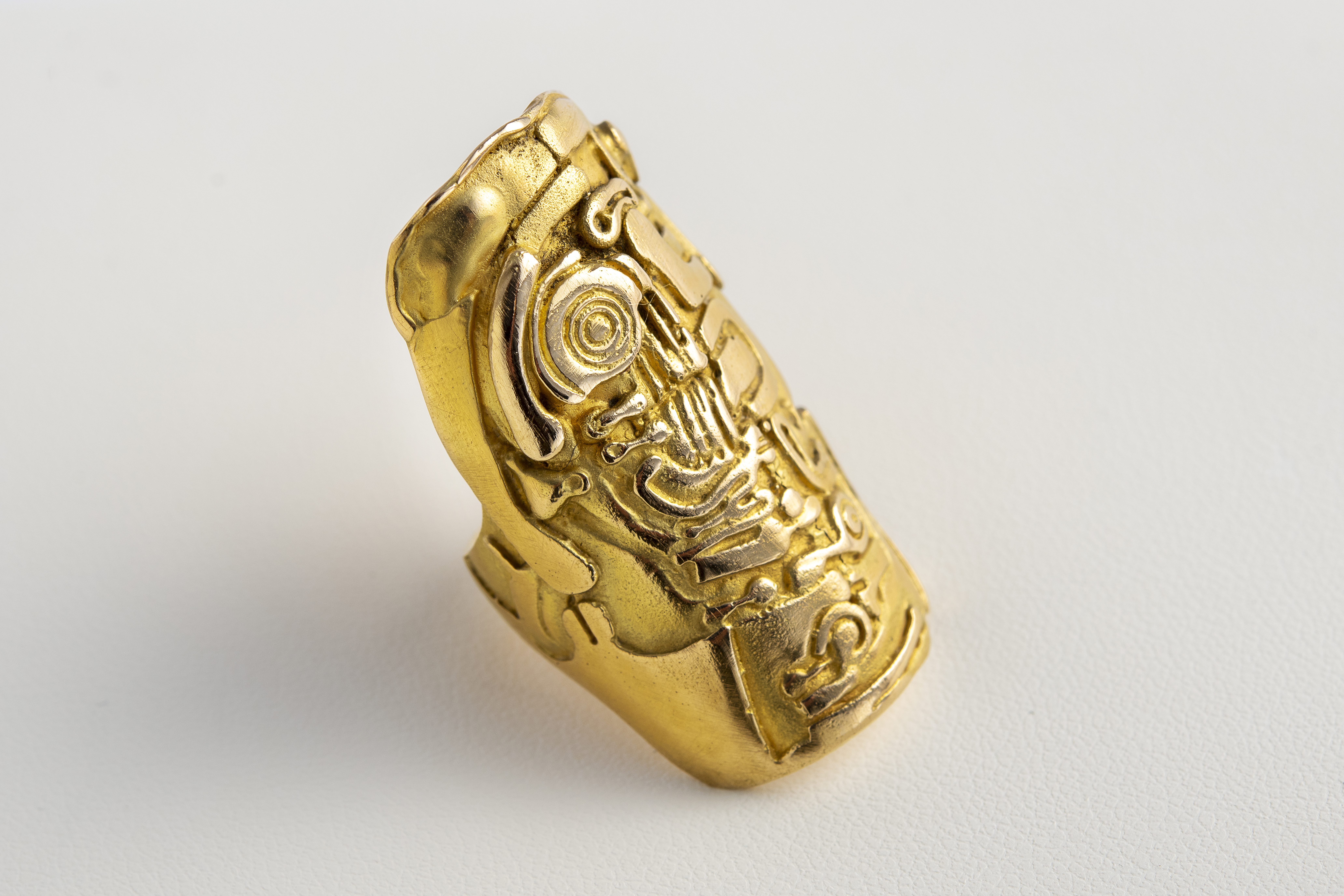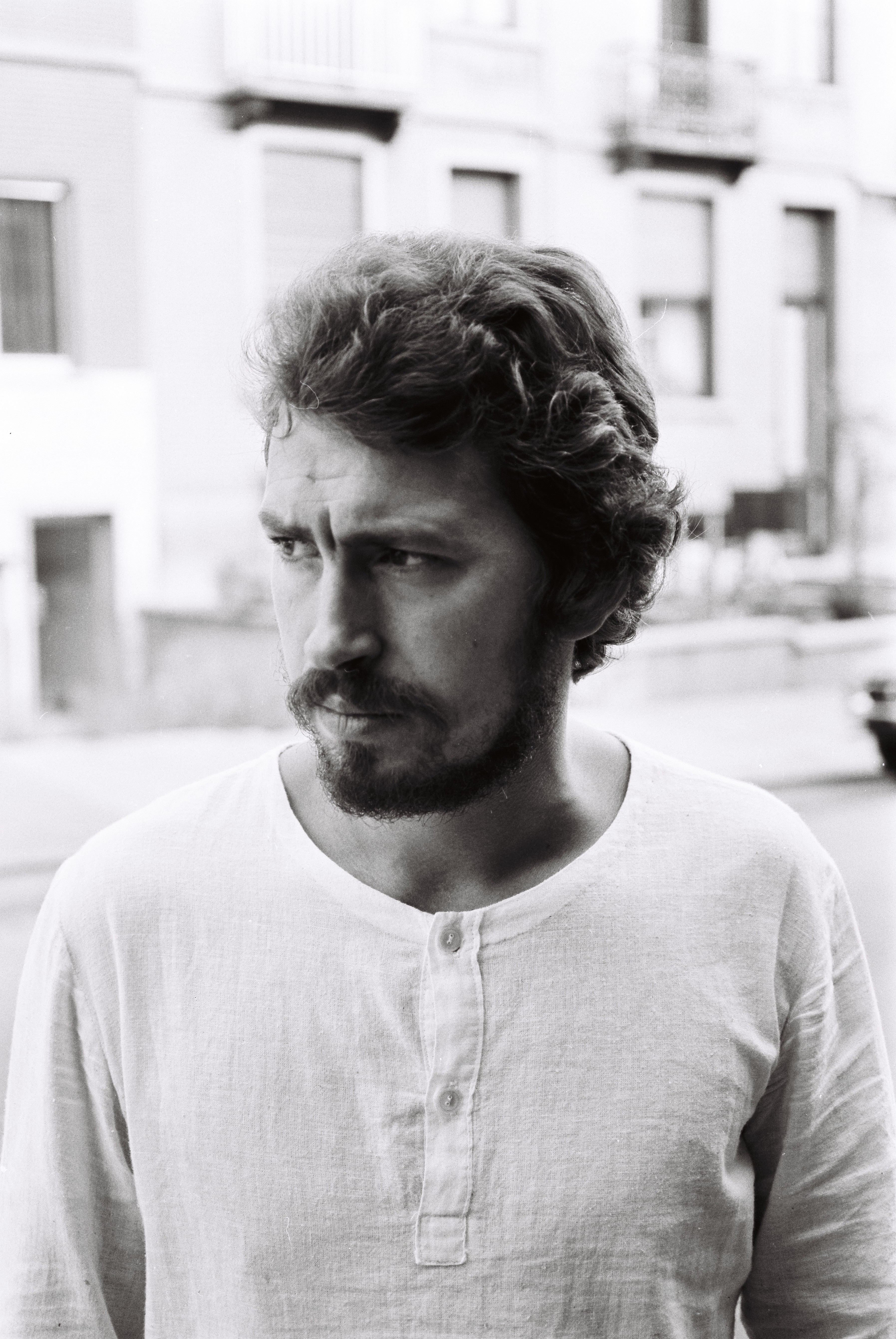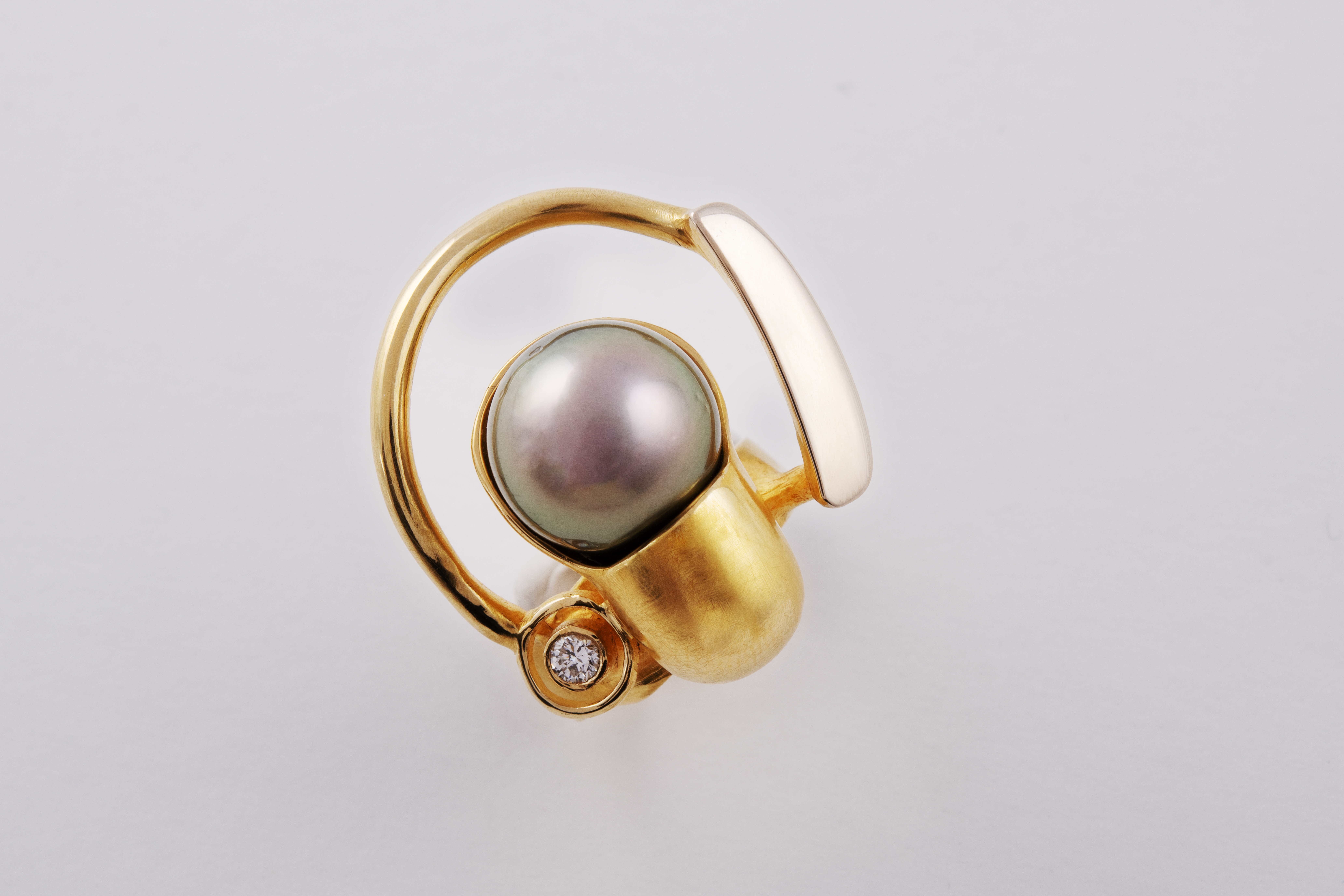Nicholas Sirot examines the importance of one of Belgium’s most innovative craftsmen.
Trained at the École des Métiers d’Art de l’Abbaye de Maredsous, Claude Wesel entered the world of jewellery in 1963 when he joined the Atelier Fernand Demaret in Brussels. This fertile environment became the crucible for his innovative ideas, fuelled by the creative energy he shared with other young talents, such as Michel Toussaint and Michel Louwette. It was here that he began his initial research, passionately committed to innovating and redefining the traditional language of jewellery.
“If my jewels don’t speak, it’s because they think” – Wesel
A virtuoso of ancient technique of lost-wax casting, Wesel has always sought to transcend the limits of the craft. While remaining faithful to classic jewellery materials such as noble metals, diamonds, tortoiseshell and amber, he also added other materials, such as precious wood, and delicate use of colored acrylic. His technical skills and use of diverse materials provided him with a rich vocabulary for his ‘biomechanical language’ where organic elements engage in dialogue.
The names of his collections demonstrated his range and imagination: Hublot, Samouraï, Les bolos, Les protozoaires. His style was constantly evolving, oscillating between experimental and more traditional forms, but always marked by his distinctive originality.
“I fell in love with beautifully made 1960s Belgian jewels signed by Demaret and produced by master jeweller Claude Wesel,” says Betty de Stefano of the Collectors Gallery. “The more I learned about the works of Claude Wesel and the Groupe Atelier Demaret, the more I fell under their spell. I no longer had any choice; I had to put together a collection of these incredible pieces of jewellery, which were actually genuine works of art.”
The 1970s marked a major turning point in his career when Wesel decided to become an independent goldsmith artist. This gave rise to two decades of daring exhibitions, in which his creativity flourished in a land of total freedom. In the 90s, under the banner of ‘Bijoux Sauvages’ (Wild Jewellery), he incorporated organic materials such as bone, hair and shells.
A trailblazer, Wesel combined sumptuous jewels with bold shapes that come to life as miniature sculptures. When using precious or semi-precious stones, he makes them the focal point of his construction; all the shapes, lines and colours are arranged in relation to the stone so as to enhance its sparkle. He said that a diamond’s exceptional decorative value stems from its great power of refraction, “it should be used for its beauty, not as a symbol of wealth.”
“Bringing technique to art through my processes, and art to technique through my inspiration, is my quest” – Wesel
Founder of the Wesel Art Gallery in Waterloo in 1989, Claude Wesel was not just a designer, but also a pillar of the Belgian goldsmith’s trade. This exhibition space hosts contemporary artists, underlining his commitment to the artistic community. His contribution to the evolution of contemporary jewellery in Belgium and beyond has been immeasurable.
Until his death in 2014 his evocative collections, from ‘Hublot’ to ‘Samouraï’, took art lovers on a spellbinding journey to the heart of Claude Wesel’s imagination. His original and varied artistic vocabulary made him stand out in the world of contemporary goldsmithing.
Wesel’s artistry is widely recognized and his pieces can be found in prestigious institutions such as Pforzheim’s Schmuckmuseum, the Communauté française des arts plastiques, Antwerp’s Diamond Museum, and Houston’s Museum of Fine Arts (MFAH).
Claude Wesel’s pieces were presented at Collector’s Gallery during the Brafa Art Fair from 28 January to 4 February 2024 and many pieces can be found for sale at Collector’s Gallery, 12 rue des Minimes, 1000 Brussels, info@collectors-gallery.com or betty@collectors-gallery.com


